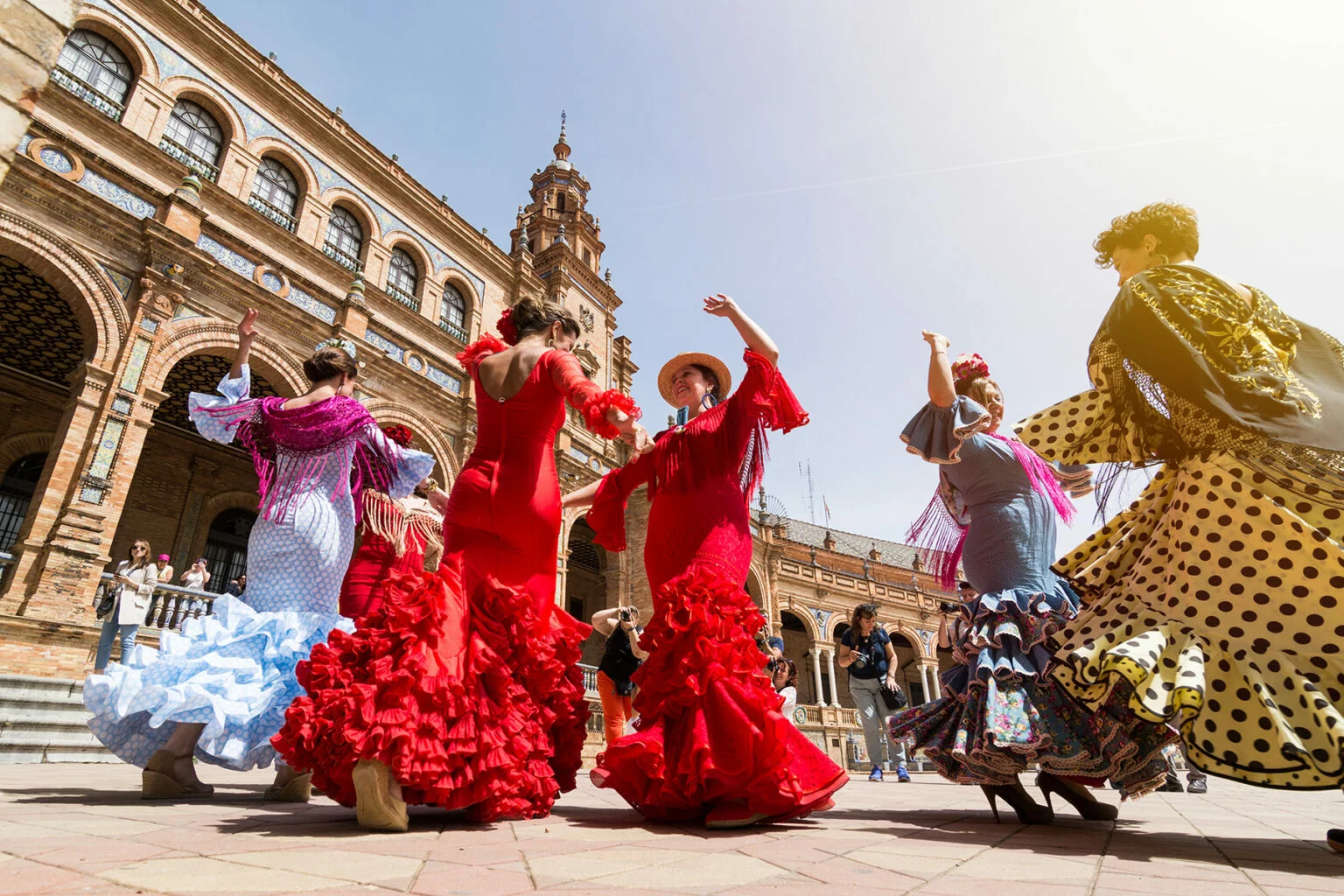Spain is a country known for its rich culture, deep traditions, and vibrant festivals that attract millions of visitors every year. Whether you’re looking to experience age-old religious ceremonies, flamboyant parades, or unique local traditions, Spain’s festivals offer a window into its soul. From the famous tomato-throwing extravaganza of La Tomatina to the solemnity of Semana Santa, these celebrations highlight the diversity and passion that make Spanish culture so special. Below is a detailed look at the top festivals in Spain, including prices, timings, and everything you need to know to plan your visit.
1. La Tomatina – Buñol (Valencia)
La Tomatina is one of Spain’s most famous festivals, celebrated on the last Wednesday of August each year in the small town of Buñol, near Valencia. What started as a local food fight in the mid-1940s has grown into an internationally renowned event, attracting tens of thousands of participants from all over the world.
What to Expect: The festival involves participants throwing ripe tomatoes at each other in the streets of Buñol for about an hour. The whole town turns red as tons of tomatoes are hurled, creating a fun, messy experience.
Timings: La Tomatina begins at 11:00 AM and lasts until around noon. However, it is recommended to arrive early to secure a good spot.
Cost: In recent years, due to the popularity of the event, Buñol has implemented an entry fee to limit the number of participants. Tickets typically cost between €12 to €15, but prices may vary based on how early you book or if you opt for VIP packages that offer perks like a shower or locker access after the event.
Accommodation and Travel: Buñol is a small town, so accommodation can be limited. Many visitors stay in nearby Valencia and travel by bus or train to Buñol on the day of the event. Buses to Buñol typically cost around €10 to €15 round trip.
Important Tips:
- Wear old clothes and shoes you don’t mind ruining.
- Goggles are recommended to protect your eyes from the acidic tomato juice.
- The town provides hoses for participants to clean up afterward.
2. Semana Santa – Nationwide (Seville, Málaga, and Valladolid)
Semana Santa, or Holy Week, is one of Spain’s most significant religious festivals, celebrated throughout the country in the week leading up to Easter Sunday. The most famous processions take place in Seville, Málaga, and Valladolid, but almost every town and city in Spain holds its own version of the festival.
What to Expect: Semana Santa is marked by solemn and grand processions, where participants dressed in traditional penitential robes carry floats adorned with statues of the Virgin Mary and scenes from the Passion of Christ. The atmosphere is reverent, with religious hymns and the steady beat of drums filling the streets.
Timings: Semana Santa takes place during the entire week before Easter Sunday, with processions usually beginning in the late afternoon and continuing into the night. The exact schedule varies by city.
Cost: There is no cost to watch the processions, but seating in reserved areas, especially in Seville, can be expensive. Prices for reserved seats can range from €30 to €150 depending on the location and day.
Accommodation and Travel: Semana Santa is a major event, especially in cities like Seville, so it’s important to book accommodation well in advance. Hotel prices can spike during the festival, with rooms costing upwards of €150 per night in central locations.
Important Tips:
- Be prepared for large crowds, particularly in Seville and Málaga.
- The processions can last for several hours, so bring water and wear comfortable shoes.
3. Las Fallas – Valencia
Las Fallas is a five-day festival held annually in Valencia from March 15 to 19. This lively and colorful event is dedicated to Saint Joseph, the patron saint of carpenters, and is famous for its towering, intricate sculptures (fallas) made from wood, paper, and wax. These fallas are often satirical representations of political or cultural figures, and they are ultimately set ablaze in a grand spectacle on the final night.
What to Expect: The days are filled with parades, firework displays, traditional music, and street parties. The climax of the festival is the “La Cremà” (the burning), where the fallas are set on fire at midnight on March 19.
Timings: Las Fallas runs from March 15 to 19, with most of the events happening in the evenings. The burning of the fallas begins at midnight on the final day.
Cost: Las Fallas is free to attend, although some events like fireworks displays and parades may have viewing areas that require a ticket. Expect to pay between €20 and €50 for these reserved spots.
Accommodation and Travel: Valencia is packed during Las Fallas, so it’s best to book your accommodation early. Prices for hotels can range from €100 to €300 per night, depending on the proximity to the main festival areas.
Important Tips:
- Valencia’s streets are crowded during Las Fallas, so be prepared for noise, firecrackers, and large crowds.
- Bring earplugs if you’re sensitive to loud sounds, as the festival includes a lot of pyrotechnics.
- Keep a safe distance during the burning of the fallas, as the flames and smoke can get intense.
4. San Fermín – Pamplona (Navarra)
San Fermín, held annually from July 6 to 14 in Pamplona, is best known for the “Running of the Bulls” (Encierro). This festival, which dates back to the 13th century, attracts adrenaline junkies from all over the world who gather to participate in or witness the daily bull runs.
What to Expect: Each morning during the festival, bulls are released into the streets of Pamplona, and participants—dressed in white with red scarves—run ahead of them to the city’s bullring. In addition to the bull runs, San Fermín includes parades, traditional Basque music, dancing, and fireworks.
Timings: The bull runs start at 8:00 AM every day from July 7 to 14, but festivities continue throughout the day and night with concerts, fireworks, and street parties.
Cost: Watching the bull runs is free, but there are options to view the event from balconies along the route, which can cost anywhere from €50 to €150 depending on the location. Participation in the run is free, but it is recommended only for those who are physically fit and understand the risks.
Accommodation and Travel: Pamplona is a small city, so accommodation can be scarce and expensive during San Fermín. Hotel prices start at around €200 per night during the festival, and many visitors opt to stay in nearby towns or even camp.
Important Tips:
- Running with the bulls is dangerous, and injuries are common. Only experienced runners should participate.
- Wear traditional San Fermín attire (white clothes and a red scarf) to blend in with the locals.
- If you’re not running, arrive early to find a good spot along the route to watch.
5. Feria de Abril – Seville
Feria de Abril, or Seville’s April Fair, is a week-long celebration that takes place two weeks after Easter. The festival originated as a livestock fair but has evolved into a grand spectacle of flamenco dancing, bullfighting, and socializing.
What to Expect: Feria de Abril is held in a large fairground, where over 1,000 private and public casetas (tents) are set up. These casetas are where locals gather to eat, drink, and dance the night away. The festival is known for its vibrant flamenco dresses, horse-drawn carriages, and lively atmosphere.
Timings: Feria de Abril typically starts on a Monday at midnight with the lighting of the main entrance gate and continues for six days, culminating on Sunday night with a fireworks display.
Cost: While access to the fairground is free, most casetas are private and can only be entered by invitation. However, there are several public casetas that are open to visitors, where you can enjoy traditional tapas and drinks. Bullfighting tickets during Feria de Abril can range from €30 to €100, depending on the seating.
Accommodation and Travel: Seville is extremely busy during Feria de Abril, and hotel prices rise significantly. Expect to pay around €150 to €300 per night for accommodation in central Seville during the festival.
Important Tips:
- Wear traditional Andalusian attire if you want to fully immerse yourself in the festival’s spirit.
- Plan to attend at least one evening of the fair, as the atmosphere is especially magical at night with the lights and music.
6. Carnival – Santa Cruz de Tenerife (Canary Islands)
Spain’s Carnival is celebrated across the country, but the largest and most famous is held in Santa Cruz de Tenerife in the Canary Islands. Often compared to Rio de Janeiro’s Carnival, this event is a vibrant, colorful celebration of music, dancing, and elaborate costumes.
What to Expect: Carnival is a multi-day event filled with parades, concerts, and street parties. The highlight of the festival is the “Ritual Burial of the Sardine,” a satirical parade that marks the end of the carnival festivities.
Timings: Carnival in Tenerife usually takes place in February, with events spread over several weeks. The main parades typically occur during the second week.
Cost: Carnival is free to attend, but costs can add up if you decide to purchase costumes, attend special events, or buy tickets for reserved seating at the parades. Reserved seats for the main parade can cost between €20 and €50.
Accommodation and Travel: Tenerife’s hotels fill up quickly during Carnival, with prices ranging from €80 to €200 per night for mid-range hotels. Many visitors book well in advance to secure a place.
Important Tips:
- If you want to fully participate in the festivities, consider buying or renting a costume, as most locals and visitors dress up.
- Bring cash, as many street vendors and smaller stalls do not accept credit cards.
Conclusion
Spain’s festivals offer a unique way to experience the country’s rich culture, history, and traditions. From the excitement of La Tomatina to the solemnity of Semana Santa, each celebration has its own distinct flavor and significance. Whether you’re looking to immerse yourself in religious processions, partake in chaotic street festivals, or dance the night away at a fair, Spain’s festivals promise unforgettable experiences.











